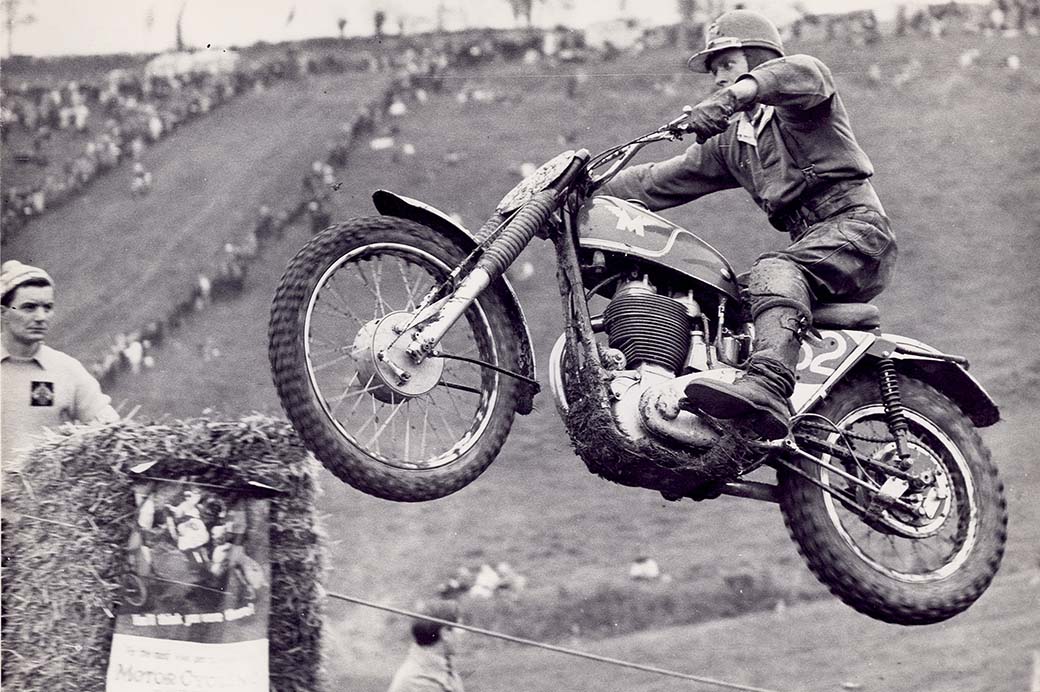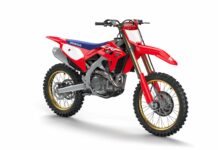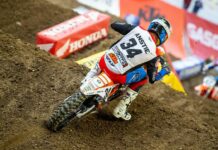British motocross lost a true great recently when Vic Eastwood died after a long battle with illness.
The 78-year-old multiple MXdN and GP winner forged a name for himself in the late fifties and sixties when the BBC beamed live scrambling action into households pretty much each and every weekend throughout the winter months.
As well as being a keen competitor, Vic was also a great engineer and test rider too. As such, he became a pillar of the south-east motocross community with his shop Eastwood Racing – situated in Swanley just a stone’s throw from Canada Heights – servicing the needs of weekend warriors and pro stars alike for the past 45 years.
On top of being a keen competitor and canny businessman, Vic was also a real family man and is survived by his wife Ann and his two sons, Vic and Mark, who both made it to GP-level themselves.
As a mark of respect to the great man, here is Andrew Westlake’s written tribute to him…
It was a chilly day at Beenham Park in October 1962 when I first saw Vic Eastwood race.
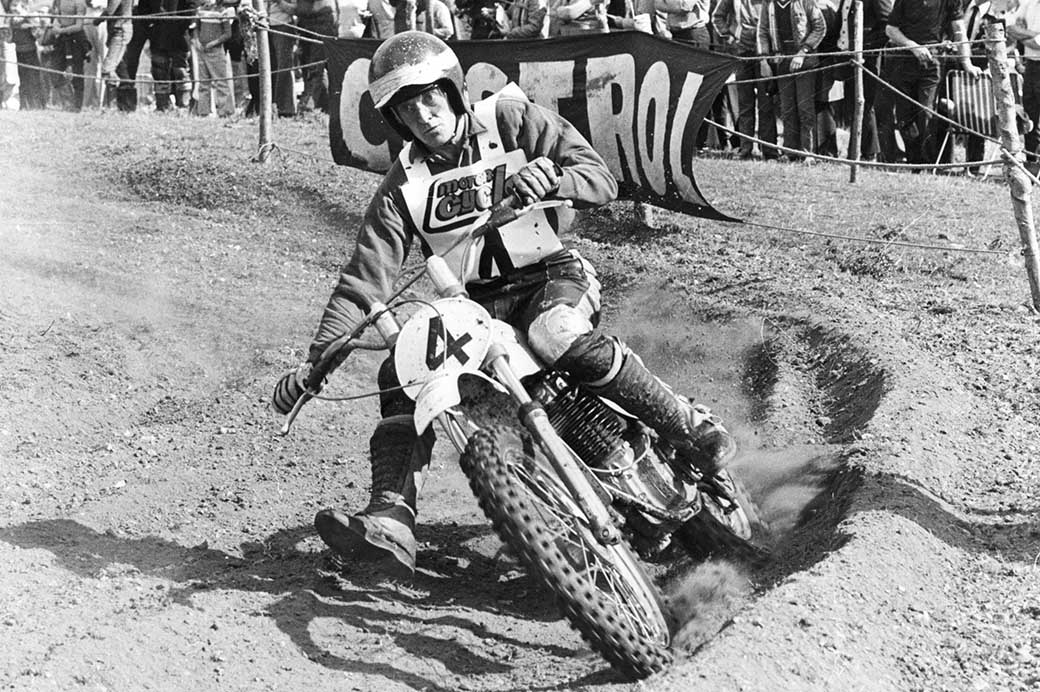
That was my first trip to the spectacular Berkshire circuit but the man from Kent was a regular visitor and after winning the hard-fought 500cc solo crown two years earlier came to the start that day as one of the pre-race favourites.
Thousands of fans lined the parkland circuit and they were in for a treat as not only was Eastwood racing his trusty Matchless but he was also making his debut on the works 250cc two-stroke James.
Scrambles fans naturally associated the name of Vic Eastwood with big booming four-strokes but when the first 250cc leg got underway he was soon showing his mettle on the lightweight machine.
By the end of the first lap, he was up with the leading pack and for eight exciting laps, Vic and the little James exchanged places with the two Greeves ridden by Badger Goss and Roger Snoad. Joe Johnson eventually took the chequered flag but Eastwood acquitted himself well and eventually brought the little Villiers powered two-stroke home in a creditable sixth place.
Later in the day, he won the 500c Experts race on his Matchless but machine troubles saw his retirement in the afternoon’s second lightweight race.
However, his natural ability to jump from heavyweight four-strokes to lightweight two-strokes was there for all to see and it would be the prelude to the rest of his highly-successful career – 15 more glorious years in which his never-say-die riding style made him a firm favourite with both Saturday afternoon TV viewers and a legion of trackside fans the length and breadth of Europe.
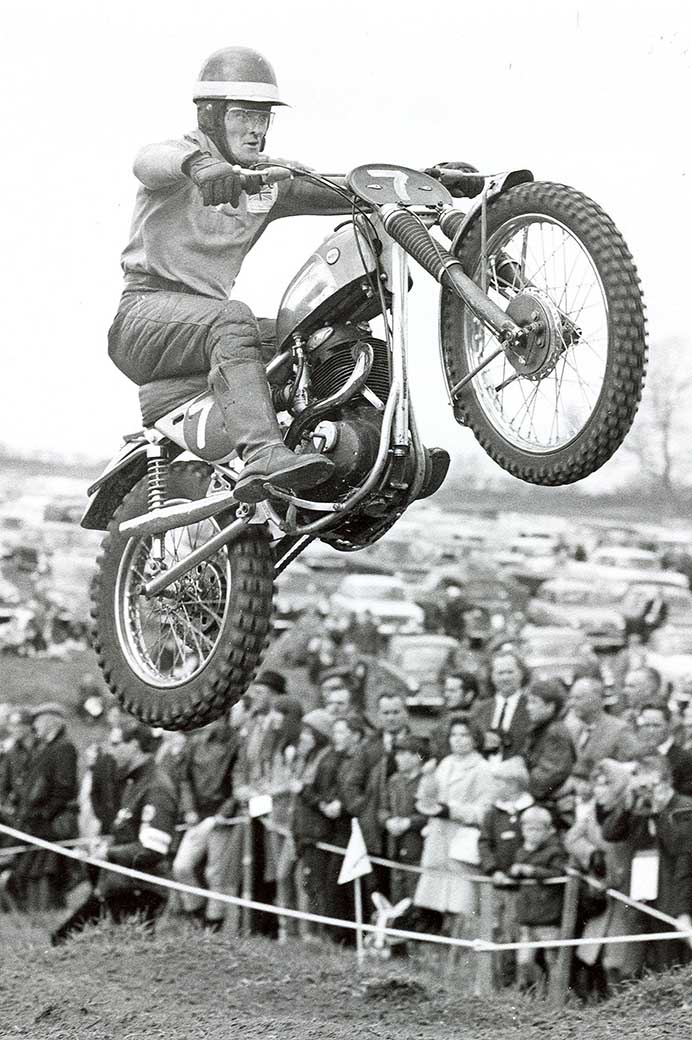
During those years – in which he raced factory Matchless, BSA, Husqvarna, AJS, CCM and Maico machinery – Vic travelled thousands of miles in pursuit of his championship aspirations but although there were plenty of memorable victories he was perhaps one of the best riders of his generation never to wear the British or World crown.
To find out more about his early days, factory bikes, unusual happenings behind the Iron Curtain and two International Six Days Trials I spoke to Vic at his home in Kent – a beautiful house which he had built during his days on the works BSA in the 1960s.
That he became a professional scrambler was perhaps not too surprising as his father had owned and raced one of the first BSA Gold stars and was a decent rider himself.
It was this bike that whetted his son’s appetite for competition.
“Dad had bought and raced the Goldie in Lancashire before he moved south when I was aged about three or four,” said Vic.
“My first recollections of him racing are when he rode at a Pirbright meeting and also in the support races of the Motocross des Nations at Brands Hatch. There was a terrific atmosphere at Brands and it was then I decided that when I was old enough I wanted to race a motorbike.
“Sometime later dad bought me an old three-speed hand-change girder forked Francis Barnett which I rode around the car park of his cafe but after a while, this got rather boring so feeling adventurous I ventured off-road across the fields and up through the nearby woods.
“This was a lot of fun but I was keen to race and in 1956 entered my first scramble. This was on a Greeves which dad had bought me but unfortunately, during practice, we were plagued with problems so the Greeves was sidelined and I ended up racing his 500cc Gold Star. I can’t recall the venue but I remember it was raining hard and the track quickly turned into a quagmire.
“There was one particularly steep muddy hill which stopped virtually the entire field but I was fit and strong from playing rugby at school and thanks to all the practice I’d put in slithering about on my old Franny Barnett in the woods I managed to keep the BSA going and won the race. I still wasn’t 16 but I’d managed to get a licence and this win meant I was immediately upgraded to Expert status.
“I figured that racing bikes was much easier than playing rugby so I decided to finish with the oval ball, dumped the temperamental Greeves and bought my own 500cc Gold Star.”
On leaving school Vic had enrolled at his local polytechnic and this proved to be a useful environment for turning new bushes for engine rebuilds.
By now he was a regular winner on the Kent scrambles scene and earning some useful money from racing his BSA. Influential people were starting to take notice of the young Eastwood and a stunning performance at a British championship race at Hawkstone Park caught the eye of AMC comp shop manager Hugh Viney.
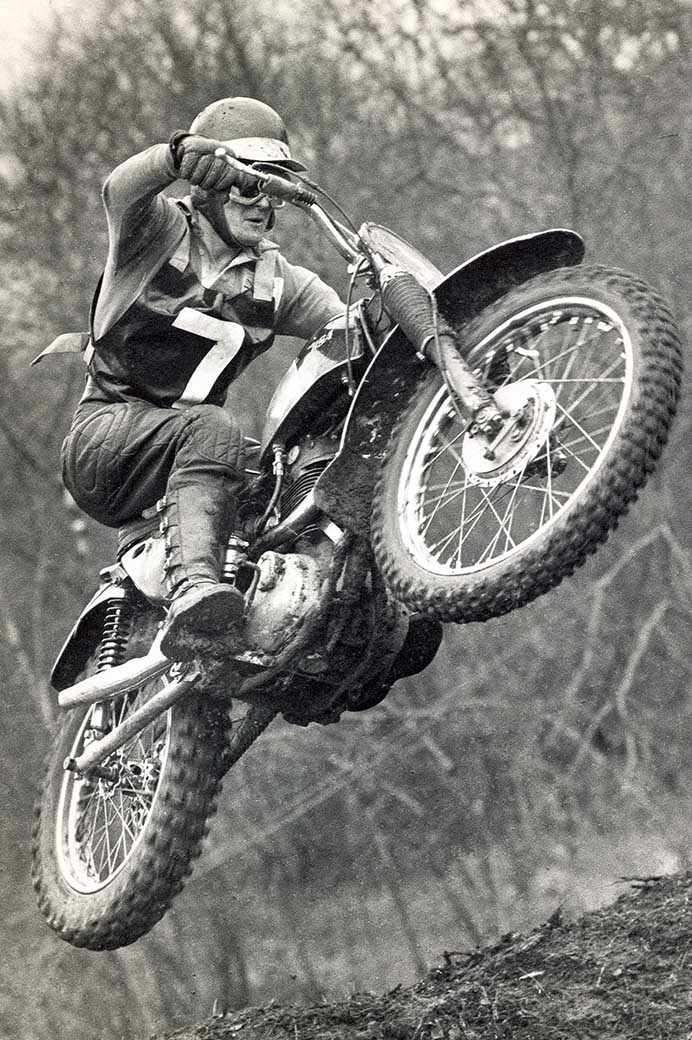
Very soon the teenager found himself on a factory Matchless and any previous thoughts of an engineering degree took a back seat. From then on he spent more time at Woolwich than he did at college and it was the start of a way of life which would continue for the next 20 years.
“I was starting to spread my wings outside the Kent area and managed to get a ride in the British championship race at Hawkstone Park on my Gold Star. “In fact I surprised myself by finishing fourth behind Johnny Giles and afterwards I was approached by AMC competition chief Hugh Viney who asked me if I would like to race one of their works Matchless scramblers.
“Better still he would pay me a retainer plus I was free to keep any prize money I won. So as you can imagine I didn’t take too long to make up my mind.”
It was the beginning of a long and successful association with AMC and Vic was soon notching up some useful wins on the big Matchless.
He was also nurturing a good working relationship with the long-established members of the comp shop, a team of skilled men who away from the prying eyes of upper management carried out a lot of improvements and modifications to the works scramblers.
“Although Hugh Viney was the competition chief the day to day running of the comp shop was down to Wally Wyatt, Fred Billot and John McClaren who between them they could get almost anything made or modified and they were a great bunch to work with.
“When I first joined AMC I was given pretty much a free rein as to what I did and most of my time at Woolwich was spent working on my own bikes. The 500cc Matchless was a fast machine but it didn’t handle too well so later I went about designing a new Duplex frame – this was drawn out on the floor in chalk and then transferred into metal on a jig.
“I was particularly pleased with the finished result as it both went and handled particularly well and I think I won first time out on it. “We soon made another for my team-mate Dave Nicoll and it was the forerunner of the new generation of very competitive AMC scramblers.
“Spurred on by my wins at home my dad persuaded me to try to get some rides in the world championship rounds and I approached Harold Taylor at the ACU.
“Harold agreed and got me an entry in the Italian GP but as I was an unknown I had to prove myself in qualifying. It was a long drive there in our pick-up truck but in the pre-race timed practice I did well and finished fourth.
“As a result of this, I came to the start line confident I could mix it with the world’s best but although I managed to get away to a good start I had to pull out at half distance when my chain snapped.”
Although Vic was quickly becoming one of the UK’s leading scramblers he readily admits he was no great trials rider and recalls that in his occasional wintertime ‘wobble’ – like a very wet Colmore – he spent more time pushing his C15T up muddy gullies than he did actually riding it.
He did, however, have two rides in the International Six Days and when I saw him on the James at Beenham in October ’62 he’d just returned from Garmisch-Partenkirchen in Germany with a prized gold medal.
On a works-prepared 497cc AJS – virtually a scrambler with lights – he was selected alongside seasoned six-day stars and fellow scramblers Arthur Lampkin and Triss and Bryan Sharp to make up the British Vase B team.
Vic’s ISDT debut was a particularly memorable one as at the end of a muddy week the British team finished runners-up to hosts West Germany in the Vase competition.
All four of them won gold and after six days and 1,200 gruelling miles, the Bexley AMC man eventually finished a close second behind experienced Triumph rider Johnny Giles in the individual points tally.
In his eight-page report in the following week’s Motor Cycle, Harry Louis reported that the Garmisch event was ‘ideally suited to scramblers’ and there was no doubt if they could curb their natural desire to ride flat out top-class riders like Eastwood, Lampkin and the Sharp brothers were ideally suited to the rigours of the ISDT.
The following year Vic was again a member of the Vase B team in Czechoslovakia but after starting well he crashed and the works AJS was left looking very second-hand. Help was at hand but as he recalled so was an eagle-eyed Russian and at the end of the day he was disqualified.
“I was going along at a fair old lick on the Ajay when I was overtaken by a Russian. I did my best to stay with him but as we crossed a gravel track my back wheel slammed into a stone water viaduct. I stayed on and managed to limp to the next control but my rear brake hub was badly damaged and to make matters worse it was a part of the bike which was sealed and couldn’t be changed.
My support crew told me they would be waiting around the next corner to work on it but in doing so we were spotted by another Russian who reported me and I was subsequently disqualified.”
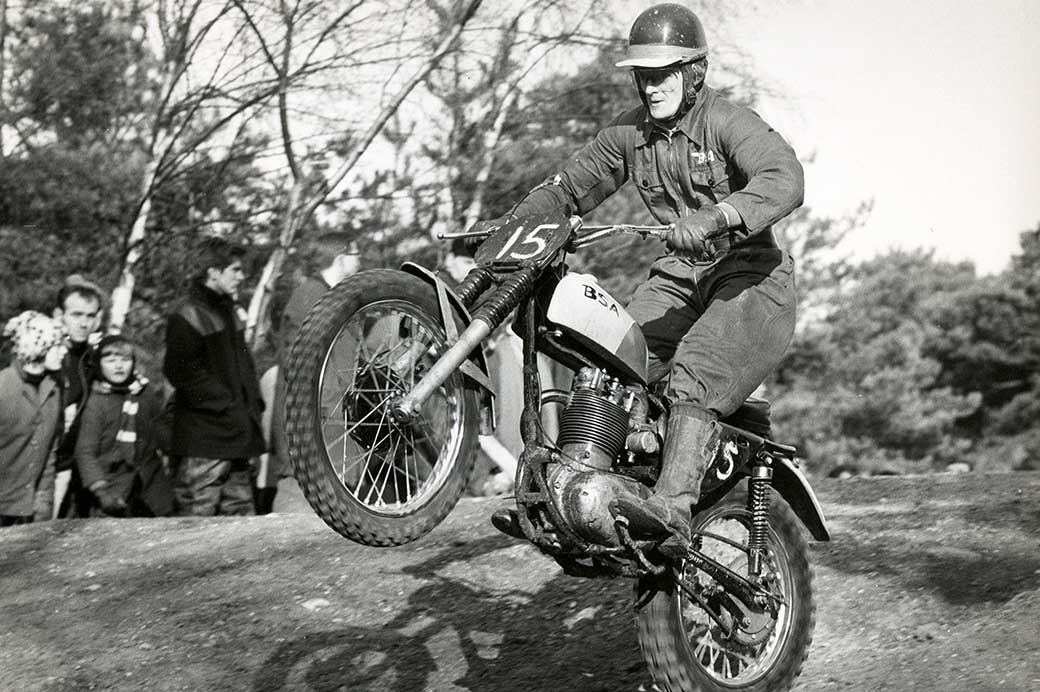
With his ride over 1963 would be Vic’s second and last International Six Days and from then on he concentrated all of his efforts into chasing valuable British and World championship scrambles points on his works Matchless.
Travelling the length and breadth of the UK and thousands of miles across Europe racing a motorbike might sound a romantic way of earning a living but the combination of driving, racing and keeping the bikes running was not an easy one.
“Travelling to British and World championship meetings meant I put thousands of miles a year on my towing vehicles and although my Matchless was a works machine I had to do most of own mechanical work on it.
“Racing week-in week-out was very tiring and I didn’t get much rest during the winter either as I rode in all of the TV scrambles which were usually bitterly cold and muddy. “These races were comparatively short so the secret was to get out of the gate as quickly as possible and just go like merry hell.”
There was no doubt the armchair fans certainly witnessed some fantastic Saturday afternoon scrambling and in most events, Eastwood and the big Matchless could be found battling for the lead.
Vic laughed as he recalled one meeting at Builth Wells where after winning the first leg he fell in the second but frustratingly was unable to start the big single – the reason as he later discovered was an exhaust pipe blocked solid with mud.
With his smooth and effortless riding-style, an Eastwood crash was a fairly unusual occurrence but as he told me a nasty spill at Hawkstone Park saw him out of action for the best part of two seasons.
“During my career, I broke a couple of collarbones in tumbles but my worst injury came at Hawkstone in a TV event.
“I’d managed to get away pretty well but I was blinded by the dazzling sun and failed to negotiate a corner. I couldn’t stop and went straight through the ropes and into a tree, badly breaking my knee.
“This kept me out of action for the best part of two seasons and when I started racing again I had to modify the footrest as I couldn’t bend my leg back far enough.”
By the mid-60s AMC was in serious financial trouble and Vic went looking for another works ride – he had the choice of two and more than 40 years later reflects as to whether he made the correct one.
“As I’d witnessed in the world championship rounds the works CZs were both blindingly fast and extremely reliable so I was left with the decision whether to go with them or a 500cc BSA.
“This was a similar bike to the one that Smithy had won the world title on but on reflection I probably made the wrong choice.
“There was no doubt the Beezer was very fast but it always felt a bit fragile and in the heat of racing I had quite a lot of gearbox and clutch problems with it. “Third gear would pack up for a pastime and I recall one event at Builth Wells particularly well.
“Not just because I managed to win both legs but the frustration of having to strip the box between races only to lose the gear again before I’d completed a couple of laps.
“Things improved when we fitted a Quaife box and the secret to avoid a slipping clutch was to fit steel plates with no cork – this worked okay but it made it extremely heavy so once I’d dumped it and cleared the start virtually all of the gear changes were clutchless. Although it wasn’t perfect BSA tried hard and we would take the bikes to Hawkstone to try out their various modifications and improvements.
“Undoubtedly the best bike I had was a full 500 which featured a longer swinging arm and a special set of ‘offset’ forks.
“Made from magnesium these had a simple hollow tube with a slot which allowed the oil to flow through but even after landing from big jumps they wouldn’t bottom out.
“The only problems we encountered were that the magnesium wore out fairly quickly but overall it was a superb machine and it was so stable you could ride it with your hands off the bars.”
It was such a superb bike that when combined with Vic’s undoubted riding skills Eastwood and the BSA briefly led the world championship standings that year.
“That was until a simple breakage many miles from home scuppered his title hopes.
“I was having some good rides and after the fifth round race – in which I finished third – I was actually leading the championships.
“Unfortunately at the next round, my chain adjuster broke and the chain jumped the sprockets. I was hundreds of miles from home which meant I couldn’t get back to England to get the new parts I needed.
“I managed to bodge it up but the uncertainty of whether the chain was going to stay on or not knocked my confidence and I struggled in the next couple of rounds.”
Chasing world championship points took Vic and his family to some fairly inhospitable places and a trip through the Eastern Bloc in the late ’60s was a particularly memorable one.
“It was the height of the cold war and we set off with the two works BSAs – plus our son Scott in his carry-cot – jammed inside my Ford Escort estate car.
“On arrival at the East German border, it took ages while they checked our passports and we were given strict instructions as to what roads we were allowed to travel on and where we were permitted to stay overnight.
“We were very much aware that we were being closely watched wherever we went but on arrival at the Russian border we were in for a real surprise.
“We were approached by three men in white suits and one of them – who spoke quite good English – said ‘stop we must spray you’. There had been an outbreak of foot and mouth disease in
Latvia and to stop it spreading they were spraying all and sundry with disinfectant – they even wanted us to open our suitcases to spray the contents but we managed to discourage them from that.
“The Russian roads were diabolical and compared to what we were used to at home it was like driving on a dusty and very pot-holed track.
“We’d been joined by a couple travelling in an old Ford Popular and it was just as well because on one particularly bad stretch of road the Ford got stuck in a huge hole and we had to join forces to lever it clear.
“Our hotel for the night was certainly very basic but thankfully the car was locked in the compound overnight and after hours of travelling, we eventually arrived at the circuit.
“The race attracted a huge crowd of around 70,000 people but it was the middle of summer and the track was incredibly dusty.
“With temperatures up in the nineties the riding conditions were horrendous and by the end of the race I was so dehydrated my head was spinning. I don’t think I’ve ever been so hot in all my life.
“The organising club had thoughtfully erected a massive tent filled with showers which cooled us down but basic commodities like drinking water and milk for Scott were difficult to find.
“Fortunately, on our way home we came across a stone trough on the side of the road so we stopped and filled our water canisters from that.”
During the next two seasons there would be numerous victories and other podium finishes for Vic and his BSA but after a series of breakdowns he became disillusioned with the works 500s and when his contract ran out he left Small Heath and was signed by Husqvarna importer Brian Leask.
It was a shrewd signing and after some initial teething troubles at Matchams Park, which saw him struggling with the floating rear brake on the 250, he quickly adapted to the power delivery of the Swedish two-strokes and was soon mixing it with the world’s best in the 500cc GPs.
“One of my early outings on the Husky was at Namur in Belgium and although I did okay I wasn’t totally happy with the handling so after the meeting Brian Leask went to the factory in Sweden and got me a modified frame.
“It had a slightly different steering head angle which pushed the forks out a bit but it made the world of difference to the way it handled and steered. In fact, it was so easy you could ride with your hands off the bars.
“When Brian was at the factory they also gave us a special 440cc barrel and piston and this transformed a very good bike into a brilliant one – it was extremely fast and later that season I managed to win both the British and Luxemburg GPs on it.”
After two or three highly successful seasons on the Husqvarna Vic then returned to British bikes – firstly a pair of works AJS bikes and then two years later one of Alan Clews CCMs.
“The standard 410 AJS was a pretty good bike but in an effort to keep up with the opposition Peter Inchley and Fluff Brown stretched the engine out to a full 500cc.
“In ready-to-race form it had a huge expansion box and a silencer which not only made it extremely quiet but also very tractable and easy to ride.
“I rode it in quite a few British and World championship rounds but before it could be developed NVT pulled the plug and I was then signed by Alan Clews to race his BSA-based CCM. With its improved gearbox, stronger clutch and uprated suspension it was everything the works BSA should have been and I immediately felt at home on it.
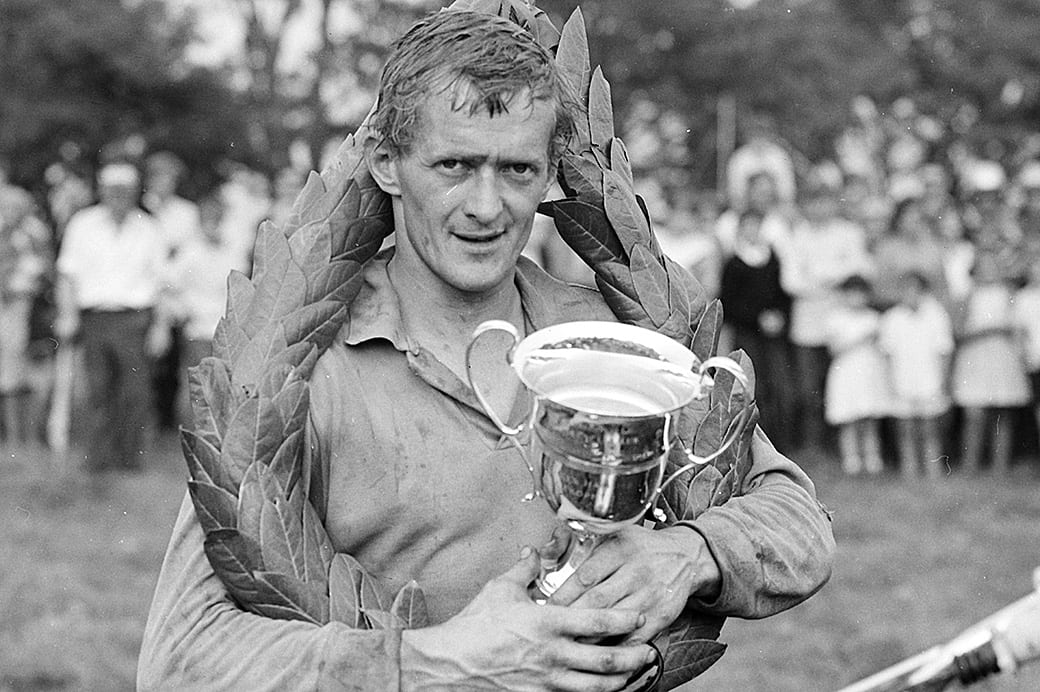
“Vic Allen was the other team rider and twice a week we would test the bikes in an old sandpit near to my home in Kent. We would keep going for an hour at a time which gave both us and the bikes excellent preparation for the 45 minutes of a GP which by comparison were a doddle.”
Trackside fans loved the booming four-stroke CCMs but despite the riders’ skills they were hard pushed to keep pace with the lighter, faster two-strokes and after two or three seasons Vic decided it was a case of ‘if you can’t beat them, join them’ and signed for Badger Goss’ Maico team.
“From my experience of racing against them in the world rounds, I knew the Maicos were extremely fast although I didn’t fully appreciate how well they braked and handled until I went with Badger to the factory in Germany.
“At a casual look they appeared rather crude but they were extremely rugged and it only took a quick ride on the factory’s test track to realise how good they were.”
Vic continued to campaign the German two-strokes in both the British and World championship rounds for a couple of seasons but by then he was running a busy motorcycle shop and finally retired from racing in the mid-’70s.
In addition to the shop – selling mostly Husqvarna, Maico and then Suzuki and Honda motocross bikes – he also found time to develop a power-enhancing and quieter exhaust system with Derek Elwell and for many years was a regular sight on his local motocross track, giving them a thorough testing.
[more-from heading=”Latest News” category=”news”]



